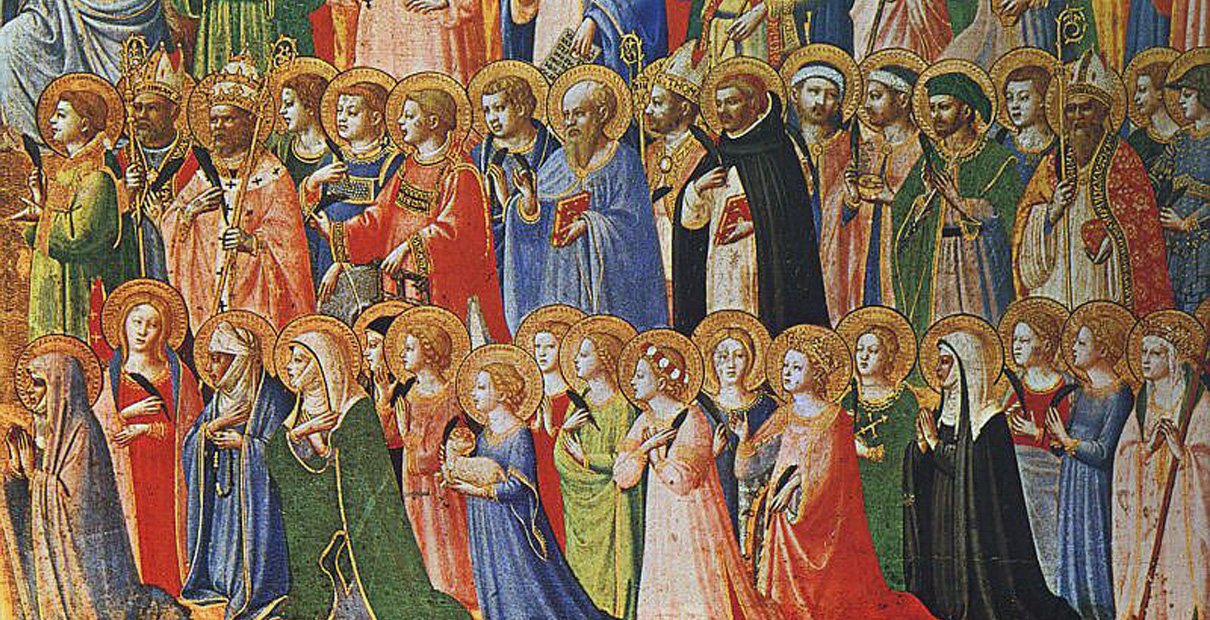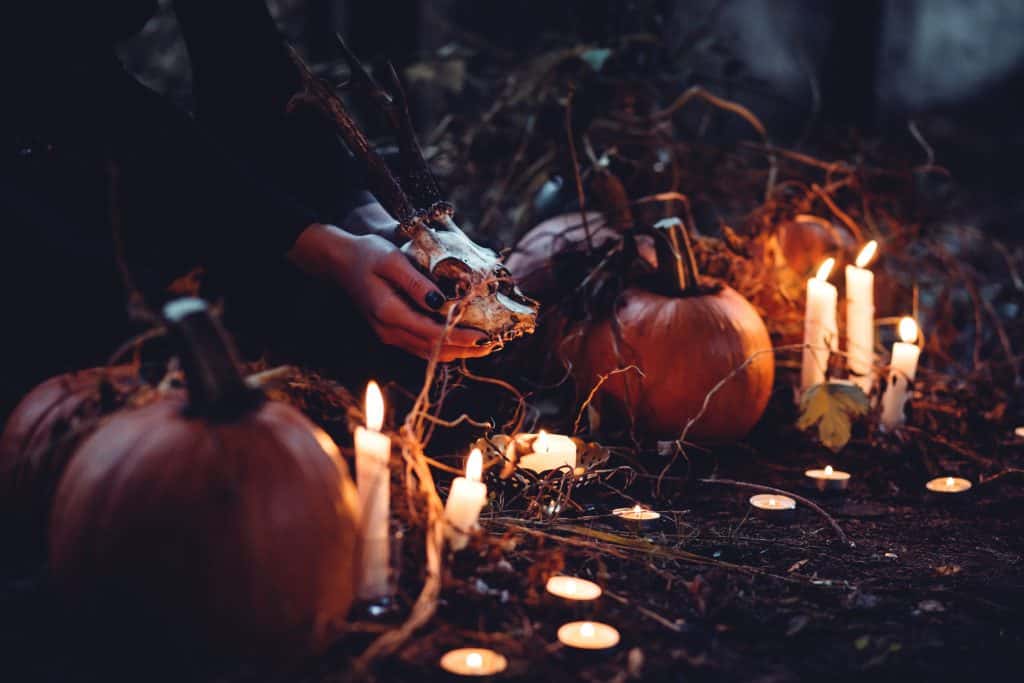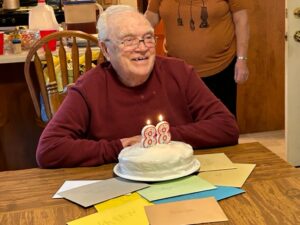 Here we go again! The Jack o’ lanterns, spooks, giant skeletons, and other holiday decorations in lawns and department store windows, the heaps of candy in grocery stores, the perennial return of pumpkin-spice-EVERYTHING–all presage the approach of Halloween: after Christmas, the biggest commercial holiday of the year. But what many will not realize is that, like Christmas, Halloween is a Christian celebration.
Here we go again! The Jack o’ lanterns, spooks, giant skeletons, and other holiday decorations in lawns and department store windows, the heaps of candy in grocery stores, the perennial return of pumpkin-spice-EVERYTHING–all presage the approach of Halloween: after Christmas, the biggest commercial holiday of the year. But what many will not realize is that, like Christmas, Halloween is a Christian celebration.


The feast was shifted from spring to fall in response to the Celtic celebration Samhain (pronounced “SOW-en”), an ancient festival of the quarter-year, falling between the autumnal equinox and the winter solstice. In Celtic culture, Samhain was believed to be a night when the borders between this world and the next became particularly thin, so that the unquiet dead could cross over and molest the living. Food offerings, lamps, and even the severed heads of enemies (grimly recalled, perhaps, by jack o’lanterns) were set out to appease or turn aside the ghosts.
When the Celts became Christians, this grim night too was transformed. As the Epistle for All Saints Day (Ephesians 1:11-23) affirms,
In Christ we have also obtained an inheritance, having been destined according to the purpose of him who accomplishes all things according to his counsel and will, . . . so that, with the eyes of your heart enlightened, you may perceive what is the hope to which he has called you, what are the riches of his glorious inheritance among the saints, and what is the immeasurable greatness of his power for us who believe, according to the working of his great power. God put this power to work in Christ when he raised him from the dead and seated him at his right hand in the heavenly places, far above all rule and authority and power and dominion and above every name that is named, not only in this age but also in the age to come. And he has put all things under his feet and has made him the head over all things for the church, which is his body, the fullness of him who fills all in all. (Eph 1:11, 18-23 [NRSVUE])
Jesus Christ has triumphed over sin, death, hell, and the grave–so death, and the dead, no longer need to be feared!
The separate Roman Catholic celebration of All Souls Day on November 2 is down to Odilo, abbot of Cluny, who died 1048. Having remembered all the saints in heaven, Odilo thought, it was only right that on the following day we remember all the faithful dead, and pray for their release from purgatory. But for many Christians, All Saints Day celebrates the lives and anticipates the resurrection of all believers.
All Saints Day was John Wesley’s favorite Christian celebration. Joe Iovino writes:
John Wesley, founder of the Methodist movement, enjoyed and celebrated All Saints Day. In a journal entry from November 1, 1767, Wesley calls it “a festival I truly love.” On the same day in 1788, he writes, “I always find this a comfortable day.” The following year he calls it “a day that I peculiarly love.”
Because of its association with Samhain, some Christians argue that we should not celebrate Hallowe’en at all–that to do so is to flirt with the demonic, and to open the door to evil influences. I disagree. I think it is fitting that this night, which used to be a grim and grisly night of fear, has become a night of laughter and joy, when it is little children who come to our doors for treats! As the Reformer Martin Luther once observed, “The best way to drive out the devil, if he will not yield to texts of Scripture, is to jeer and flout him, for he cannot bear scorn.”
Happy Hallowe’en, friends! A joyous All Saints Day to you all–and to my Dad Bernard Tuell, the best saint I know, a happy 88th birthday too!
AFTERWORD

The Mexican Dia de los Muertos (or Day of the Dead), delightfully depicted in the Disney movie Coco, shows some influence from both Celtic Spain, and from the Christian All Saints and All Souls days. However, its roots are not only pre-Christian, but pre-European, going back to indigenous Meso-American cultures such as the Aztecs. Significantly, while this festival also involves belief in the dead crossing over to the world of the living, the dead are not feared: their families remember, celebrate, and welcome them.
